 Royal Navy (1936-38)
Royal Navy (1936-38)I class: Icarus, Ilex, Imogen, Imperial, Impulsive, Inglefield, Intrepid, Isis, Ivanhoe, Inconstant*, Ithuriel*.
WW2 British Destroyers:
V class | W class | W mod class | Shakespeare class (1917) | Scott class (1818) | A/B class (1926) | C/D class (1931) | E/F class (1933) | G/H class (1935) | I class (1936) | Tribal class (1937) | J/K/N class (1938) | L/M class (1940) | Hunt class DE (1939) | O/P class (1942) | Q/R class (1942) | S/T/U/V/W class (1942) | Z/ca class (1943) | Ch/Co/Cr class (1944) | Battle class (1945) | Weapon class (1945)The I-class destroyers were nine ships including a flotilla leader all built 1936-37. Four similar were ordered by the Turkish Navy, two were repurchased for the Royal Navy, giving 11 in class, 10 after an early loss. They incorporated a new bridge and wheelhouse layout tested on the previous HMS Hero and Hereward. The greatest giveaway of their design was indeed this addition to the bridge, no longer squat. They were also the last of this “classic” design inherited from the 1920s A/B classes and widely exported. Like the previous G-H classes they were very active in World War II and paid a heavy price, six lost in action (sunk), a 7th ship being written off due to heavy damage. They were basically a repeat of the preceding H class but with ten torpedo tubes, two banks of five, instead of eight. The next design would be very different and based on the legendary “Tribals”, our next stop.
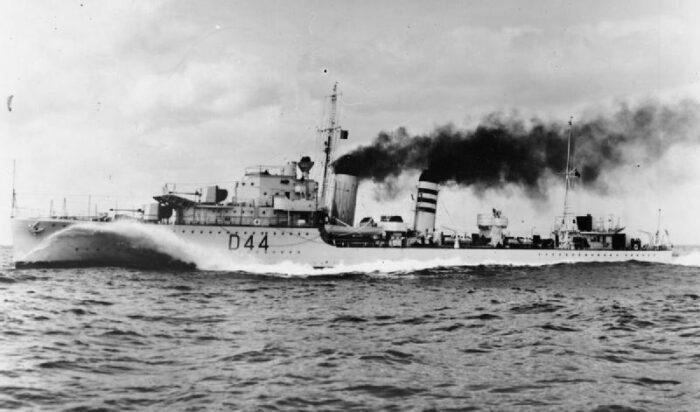
Design of the class
Development
The I-class were a repeat of the preceding H class, whih why in most publications they are assimilated to the G and H as the G/H/I. However since they are more differences between the I and the G-Hs plus the “Havant”, the post on the G-H was left as a standaline not to be overbloated. The major exception in their design was the installation of ten torpedo tubes, with two banks of five instead of eight. This was a considerable step up, dictated notabl by a general move towards more torpedo tubes initiated by Japan in 1926 with their new “special type” or Fubuki class.
A similar “scare” pushed the US Navy to also modified its own destroyer and go to the same 5-tubes standard for their Benson/Gleaves types, since on the previous Sims class, they tried a triple TT banks (12) arrangement on a much smaller tonnage that respectied treaties but was not seen as optimal, but still was better than the four TT banks (16) of the previous Benham class.
Great Britain also knew in 1935, after the Anglo-German naval treaty, that the Kriegsmarine had quadruple but was working quintuple TT banks as well. Quntuple TT banks were amlso planned for the very large Tribal class destroyers also in construction. The latter had an impresive battery of eight main guns, using twin mounts fore and aft, and space was limiuted to inly a single TT bank, hence the idea of a quintuple one to keep a sizeable torpedo armament.
Now, the quintuple tubes proved, on the same hull as the G-H, an issue wiht stability. This was a lotof added topweight. This extra weight and fitting of minesweeps and depth charge gear not alternative but now both carried all on the same hull caused further loss of stability. Soon after completion they needed ballasting, especially when oil bunkerage levels were low.
The other design point was to incorporate as standard a new bridge and wheelhouse layout. It was tested before on HMS Hero and Hereward. Oddly, the class own flotilla leader, HMS Inglefield kept the older “squat” bridge. She also had a larger tripod foremast, while the rest of the I class only had pole masts. The double installation of a minesweeping and depth charges plus Asdic for ASW made them much more capable for a reduced number of ships (nine ordered), plus theuy had fittings for an easier conversion to minelayers, which was done on four ships in 1938 (see later). They landed ‘A’ and ‘Y’ 4.7 inch guns, the torpedo tubes and their minesweeps, traded for 60 mines (see below).
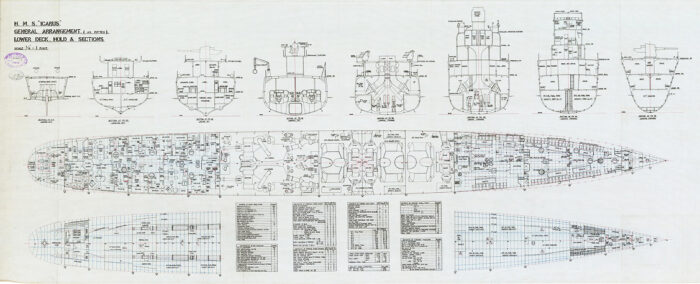

Hull and general design
he hull of the G/H/I was about the same, which reduced time to built new class for the yards already building prevous classes, to transition on the I class. Displacement was 1,370 long tons (1,390 t) as standard so slightly more than the 1,340–1,350 long tons (1,360–1,370 t) of the G-H, and 1,888 long tons (1,918 t) deep load, so again, a bit more than the G-H at 1,854–1,860 long tons (1,884–1,890 t). They were however not longer at 323 ft (98.5 m), nor larger at Beam 33 ft (10.1 m) and their draught was similar at 12 ft 5 in (3.8 m).
Their silhouette was also identical, except for their now new bridge types. This extra space was represented by a prismatic extension in front of the former squat bridge, dotted with portholes on its three faces, idea to fend off heavy weather as winter navigation bridge. The open navigation bridge roof now received a serie of windows. The roof of the extension was often painted in wartime by a RAF roundel for easier recoignition from the air. Her Complement was 137 in peacetime and 145 in wartime.

Powerplant
The powerplant was kept identical, with two shafts driven by two Parsons geared steam turbines, fed in turn by 3 Admiralty 3-drum boilers making for a total output of 34,000 shp (25,000 kW).
This gave the same baseline 36 knots (67 km/h; 41 mph) like the G-H classes, same also as the leader HMS Inglefield which had a beefed up powerplant and close to 40,000 shp (see later). Range was also the same as the previous G-H at 5,530 nmi (10,240 km; 6,360 mi) at 15 knots (28 km/h; 17 mph).
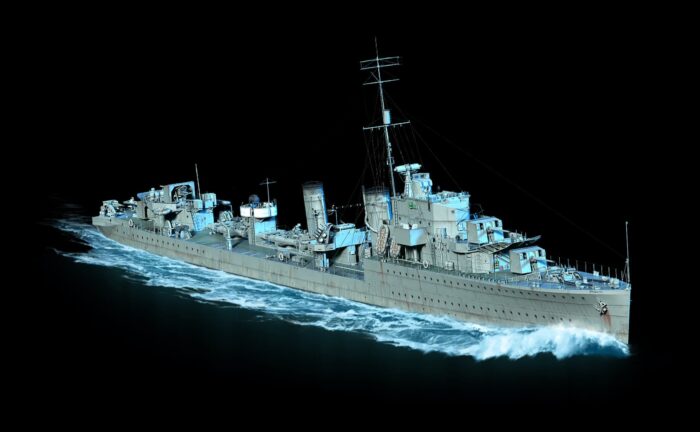
Armament
BL 4.7 inches/45 Mark IX
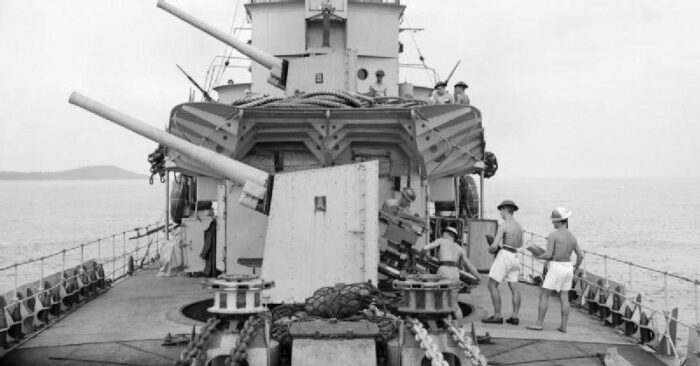
Main guns tested at 30°+ elevation on HMS Foxhound (IWM)
Produced from 1928, just as these classes were launched, the QF 4.7-inch Mk IX remained in service until 1970 and was used or exported to the RCN, RAN, Royal Hellenic Navy, Royal Netherlands Navy, Polish Navy, Royal Norwegian Navy, Turkish Navy, Dominican Navy, Argentine Navy, and Brazilian Navy with 742 Mk IX produced and 372 Mk XII of an improved design. Instead of CP Mk.VI** mountings, max elevation 30° on the E-F class new mounts were introduced, the Mark CPXVIII mounting with a ring in a deck railing base of more than 2m in diameter, 0.35 m deep. It was covered by special metallic boards lifted at higher elevation angles, ensuring the gun recoil remained its natural balance and avoiding the risk of blowing the breech into the deck. This construction however was criticized afterwards, because of its impracticality, albeit it was used on all single gun destroyers up to G class. Later the mounting evolved into the CPXXII with a spring operated rammer.
The maximum elevation of 40° was achieved by “wells”n lowered section of the deck around the mount on the G class. But they were criticized and on the H class, new mounts were fitted instead. These guns fired a 50-pound (22.7 kg) shell at 2,650 ft/s (810 m/s) but the range of 16,970 yards (15,520 m) was rarely reached, or at least with any accuracy.
Specifications Mark IX**
Mass: 2.984 long tons (3,032 kg)
Length: 220.62 in (5.60 m) Barrel 212.58 in (5.40 m) L/45
Shell: Separate loading cased charge, 50 pds (22.7 kg) SAP/HE
Breech: Semi-automatic horizontal sliding-block, Hydro-pneumatic recoil
Perfs: 15 rounds per minute at 2,650 ft/s (810 m/s) to 16,970 yards (15,520 m) at 40°
The Mk XVII main gun mounts of the H class had natural gun balancing, and secured their 40° elevation angle at the expense of shear of an axis of trunnions of a gun to a gate, allowed more space for recoil at maximum elevation angle.
QF 0.5-inch Vickers Mk III
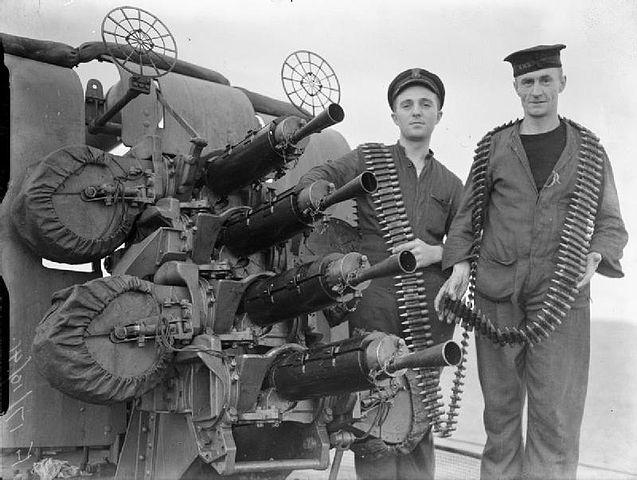
Two quadruple mounts for the QF 0.5-inch Vickers Mk III machine gun on platforms between the funnels, one mount either side. They were poorly protected against strafing fire and of limited range, only having to offer a good volume of fire at close range. Between these and the limitations of the main guns, there was a critical inter-range gap remaind uncovered, and this was paid dearly in WW2 albeit additions were made (see below).
The Mark III was a navalized land version in mountings of four tandem guns here, installed on the wings from 1931. This mount proved insufficiently powerful at short-range but from 1940-41 they were replaced on a per-mount basis by Oerlikon 20 mm cannon. This mount used a 200-round magazine per barrel wrapping the ammunition belt around the magazine drum. 700 rpm (cyclic) or 450 for longer periods. The barrels could be setup for a spread 60 ft (18 m) wid, 50 ft (15 m) high at 1,000 yd (910 m). Vickers claimed 800 rounds in 20 seconds, reload in 30 seconds.
QF 0.5-inch specs
63 pounds (29 kg), excluding 10 pounds (4.5 kg) cooling water, 52.4 in (1.33 m) long, barrel 31 in (0.79 m)
Cartridge 12.7×81mm 0.5 inches (12.7 mm) mv 2,540 feet per second (770 m/s) ceiling 9,500 feet (2,900 m range 4,265 yards (3,900 m)
21-inches torpedo tubes
The greater change was going from triple (A-B, C-D), to quadruple (E-F), then quintuple torpedo tubes banks. This really set apart these late interwar British destroyers, imposed a new standard. These banks were placed on a deck top plaform which was reloadable thanks to cranes. Later in wartime, due to additions of AA and ASW, the aft bank was removed from most ships to make room for AA or ASW guns, and spare weight. The models depicted below are the ones most likely to be assigned:
Mark IX** (1935)
This standard model was designed from 1928, first appeared in 1930, and was considerably improved by 1939. Its best speed was 41 knots but at 35 knots they were barely more faster than their carriers…
Weight: 3,732 lbs. (1,693 kg). Neg. buoy. 732 lbs. (332 kg)
Length: 23 ft 10.5 in (7.277 m)
Explosive Charge: 805 lbs. (365 kg) Torpex
Range and Speed settings: 11,000 yards (10,050 m)/41 kts, 15,000 yards (13,700 m)/35 kts
Power: Burner-cycle, 264 hp @ 41 knots
The Mark X was introduced in late 1940 and perhaps installed, it was capable of 47 knots thanks to a wet-heater.
It’s unlikely they were assigned the electric 1944 Mark XI models.
Hedgehog
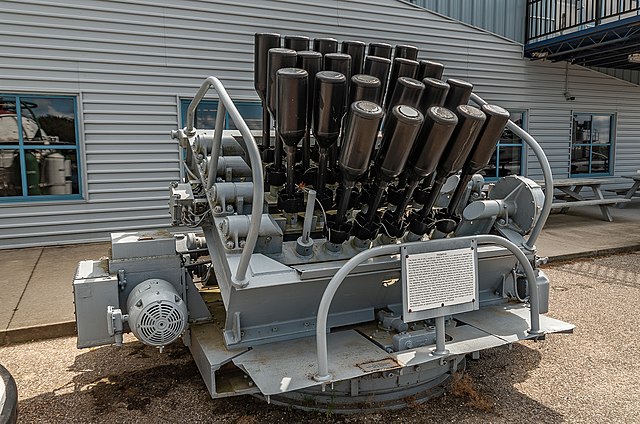
Most received in 1942 instead of their”A” position main gun forward a 24 tubes 178mm Hedgehog ASWRL. There was suspended platform woth location for 24 launcher spigots firing a 65 lb (29 kg) 7 in (178 mm) rocket carrying 30 lb (14 kg) TNT or 35 lb (16 kg) Torpex to 200–259 m (656–850 ft) and explosing by contact. They created a circle like pattern on the suspected contact, leaving little change of survival especially to a just submerged U-Boat. The charges were too small to crack open a hull but at least they could create leaks and oil slicks that could be a position giveaway.
Depth Charges
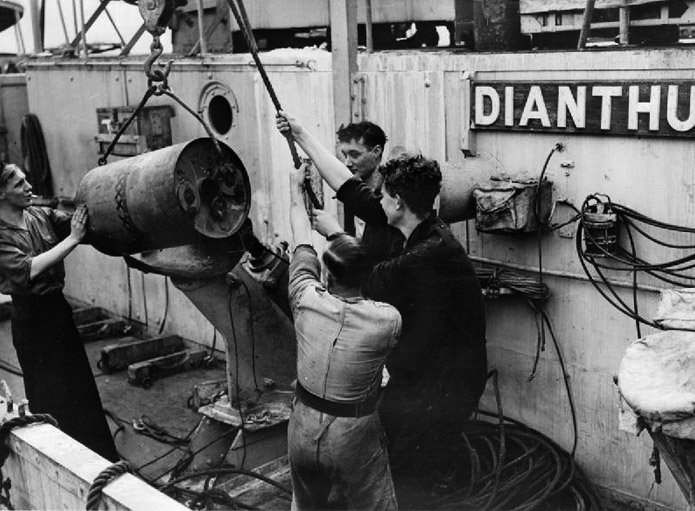
Mark VII depth charge thrower being reloaded.
The usual set comprised two Mark II Depth Charges Throwers (DCT) aft on the poop deck, facing either side, and a single Depth Charge Rack (DCR) with 20 DCs at the stern. Theere were railing to the aft superstructure for a total storage of 40 more DCs. Reload was made by hand, using winches, always a dangerous task with a rolling deck washed by waves. These depth charges were of the standard British type, meaning it was the Mark VII: In entered service in 1939, weighted 420 lbs. (191 kg) and carried a 290 lbs. (132 kg) TNT with a sink Rate or Terminal Velocity of 9.9 fps (3.0 mps) with a max setting at 300 feet (91 m) later 500 feet (182 m).
Its possible they were later upgraded to the the Mark X (1944) and the Mark X*. The X** was not introduced in service in 1945 despite its great depth (down to 1,500 feet (457 m)). Squid and Hedgehog made them obsolete. There are doubts also if the Mark VII Heavy studied from 1940 and proper to depth charge launchers were used aboard, outside experimentally. Weighting 420 lbs. (191 kg) with a 290 lbs. (130 kg) TNT charge, they had a sink rate/terminal velocity of 16.8 fps (5.1 mps) and a 300 feet (91 m) max setting, helped with a 150 lbs. (68 kg) cast-iron weight attached. The idea was to reach the U-Boat faster, and it was claimed it could split open a 0.875 inch (22 mm) hull at 20 feet (6.1 m), or force to surface at 12 m or more. The game changer was a minol charge (1942) for better results, with a 30% increase.
Mines
Only four I class destroyers were converted. At their stern, they received a pair of sponsons housing part of a mechanical chain-conveyor system to ensure smooth delivery of the mines, stored on rails on the weather deck. To compensate for the weight of these Mark XIV mines, the two aft 4.7-inch guns and associated ammunition and even the two sets of torpedo tubes plus the whalers and davits were removed. This modifications was the same of the E-F, G-H classes.
Mark XIV mines:
These were a 1920s design with either a 320 lbs. (145 kg) or 500 lbs. (227 kg) charge, and Hertz horns. Switch horns were installed and they became the Mark XVII.
Sensors
Sonars
Type 124: From 1937, improved Type 121, range 2500 yards, 1st with chemical range recorder.
Type 144: From 1943, range 2500 yards (2300 meters) to 3000 yards (2700 meters), integrated into the fire control and coupled with Hedgehog. 1st with bearing recorder, automatic scanning, turning 5 degrees after each ping, often coupled with the Type 147 “Sword” depth finding sonar with a beam steerable vertically. Also coupled with the Q attachment reducing the under hull blind spot. 60° deep vertical beam, trained with the main Type 144 transducer.
When purchased by Canada, the four C-class destroyers were refitted on Canadian specifications and saw the Type 124 ASDIC installed, and steam heating probably fitted.
Radars
Type 286: Naval air search radar, first destroyer set, very crude, not rotating. Full data 286P: rotating antenna, better bearing accuracy of 3-5 degrees.
This was a metric target indication set, based upon RAF ASV Mark II set. The Type 286M had fixed antennas (central Tx and sides Rx) to indicate contact bearing. Fixed antenna so the entire ship needed to be aimed in the right scaning angle. The Type 286PQ had a steerable combined Tx/Rx antenna from the Type 291 set at least.
Type 271: Corvette small surface search radar using a standard microwave-frequency system with improved resolution to spot surfaced U-boat 3 miles (4.8 km) around, or a periscope at 900 yards (820 m). Full data
Type 285: Anti-aircraft gunnery radar available from late 1940, Frq 600 MHz, power 25 kw, range 18,000 yd (16,000 m), ceiling 15,000 ft (4,600 m) accuracy 150 yd (140 m).
Fire Control
The main guns were controlled by the Admiralty Fire Control Clock Mk I.
Its data came from the manually-operated director-control tower plus separate rangefinder above the bridge. They could not be use for anti-aircraft fire, which was aimed by eye. HMS Hero and Hereward were given a new bridge that soon became standard up to the Battle class of 1944. For Hereward this was due to the tests of her new, massive twin-gun mounting as its trunnion height 13 inches (33 cm) was much higher, forcing to raise the wheelhouse for the helmsman to see over its top and thus it was placed in front of the bridge, no longer underneath, and with angled sides for a wedge shape with sloping roof. But this was the exception, the remainder destroyers kept their caracteristic squared bridge with the main fire control telemeter behind.
Appearance

HMS Icarus in August 1942, Operation Pedestal.

HMS Ithuriel in 1942
⚙ I class specifications |
|
| Displacement | 1,370 long tons (1,390 t) standard, 1,888 long tons (1,918 t) deep load |
| Dimensions | 323 x 33 x 12 ft 5 in (98.5 x 10.1 x 3.8 m) |
| Propulsion | 2 shafts GST, 3 Admiralty 3-drum boilers 34,000 shp (25,000 kW) |
| Speed | 36 knots (67 km/h; 41 mph) |
| Range | 5,530 nmi (10,240 km; 6,360 mi) at 15 knots (28 km/h; 17 mph) |
| Armament | 4× 4.7 in, 2×4 0.5 in AA, 2×5 21 in TTs, 1x DCR, 2× DCT, 20 DCs |
| Sensors | ASDIC, see notes wartime additions |
| Crew | 137 (peacetime), 145 (wartime) |
Wartime Modifications
Early Modifications
In 1942 it was decided the following:
-Removal of the N°2 (aft) TT bank on HMS Icarus, Ilex, Isis, Impulsive, Intrepid
-Installation in place of a QF 12-pounder (3 inch/76 mm) anti-aircraft (AA) gun.
-The aft funnel and mainmast were reduced to improve the latter field of fire.
-Two QF 20 mm/70 Mk II/IV Oerlikon AA guns were installed the bridge wings.
-Radar Type 286 installed, as a metric wavelength surface-warning set.
-Now ineffective Vickers quad tandem 0.5 in (13 mm) mounts were replaced with single Oerlikons.
-As a tradeoff, the remainder N°1 TT banks lost its central tube to spare topweight.
-HMS Icarus her her old ‘Y’ gun removed for extra depth charges (110 plus new mortars), best ASW suite of the class.
Later Modifications

-In 1943 Icarus she lost two main guns and the 3-in/45 for an Hedgehog ASWRL plus 2 DCT and 125 DC. The Type 124 was replaced by a Type 144 sonar.
-The same year on Ilex, Isis, Impulsive, Intrepid the same mod. was done, except for the addition of two 57mm/40 6pdr Hotchkiss Mk I.
Surviving ships received a more Oerlikons (2), installed abreast the searchlight position. Often the 12-pdr was deleted as seen above to increase depth charges and the ‘A’ gun replaced by an Hedgehog, later reversed for some ships intended for the Pacific. Ilex, Intrepid, Impulsive and Isis had in addition theior ‘B’ gun removed (so the while superfiring froward pair) traded for two QF 6-pounder 10 cwt (2.25 inch/57 mm L/47) on Mark I* mounts to deal with-E boat work.
HMS Inglefield on her side saw the removal of a second torpedo tubes removed and the first bank having its central tube remove, then a 4-in (100 mm) AA gun replaced the bandtsand between funnel ‘X’ main gun. She also had six Oerlikon AA guns and a Type 291 radar on the foremast topped by a Huff-Duff (by 1944 all survivors).
The three ex-Turkish ships (one total constructive loss) were modified like standard I-class but HMS Inconstant had the latter Type 270 radar centimetric wavelength target-indication set installed to replace its director and rangefinder, and six Oerlikons. In 1944, Icarus, Ilex, Impulsive, Intrepid, Isis had twin Oerlikon AA mounts.
In 1944 also the new radar suite comprised the type 286/M/P and type 291 radar suites.
In late 1944, HMS Icarus received a new 120mm/45 QF Mk IX gun and two Split Hedgehog Mk II ASWRL.
In May 1945, Icarus retained so three main guns (B, X, Y) on the new CP Mk XVIII mounts, she had two twin 20mm/70 Mk V, two single Mark III, a quad TT banksk and two forward Split Hedgehog Mk II ASWRL as well as 4 DCT, 1 DCR for 125 depht charges, plus the type 271, type 291 radars and type 144 sonar.
Ilex and Impulsive were left with just two main guns, also with the CP Mk XVIII mounts, they had two 57mm/40 Mk VI, two twin, two single Oerlikon, a quad TT, single Mark I Hedgehog ASWRL, 4 DCT, 1 DCR and 125 DCs plus the type 271, type 291 radars and type 144 sonar.
Minelaying conversion
Icarus, in addition to all the rest, was one of the four I-class fitted with minelaying equipment, between late 1938 and January 1939 at Malta. She had mounts for rails on the deck to carry the mines and an electric winch to run them along the rails, down to a pair of sponsons chutes added to the stern to clear the propellers when dropped. ‘A’ and ‘Y’ guns and the two quintuple TT mounts were removed as a weight saving measure. In total this made for a total of 72 mines. They also kept their original Type 124 ASDIC sound detection system.
Flotilla Leader: HMS Inglefield
Design
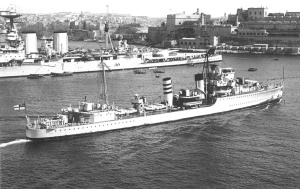 The flotilla leader HMS Inglefield had a “classic” bridge and larger tripod foremast. All serial ships had pole masts. The main changes were quintuple torpedo tubes and that extra weight and fitting of minesweeps, depth charge gear carried at the same time unlike previous vessels made them top-heavy and unstable as they shared the same hull. They needed ballast when oil bunkerage levels went low to avoid catastrophy. They were also capable of conversion to minelayers with a procedure seeing ‘A’ and ‘Y’ main guns and torpedo tubes, minesweeps removed to install rails for 60 mines. This was done only on four ships. The two ex-Turkish vessels kept their quad-torpedo tubes.
The flotilla leader HMS Inglefield had a “classic” bridge and larger tripod foremast. All serial ships had pole masts. The main changes were quintuple torpedo tubes and that extra weight and fitting of minesweeps, depth charge gear carried at the same time unlike previous vessels made them top-heavy and unstable as they shared the same hull. They needed ballast when oil bunkerage levels went low to avoid catastrophy. They were also capable of conversion to minelayers with a procedure seeing ‘A’ and ‘Y’ main guns and torpedo tubes, minesweeps removed to install rails for 60 mines. This was done only on four ships. The two ex-Turkish vessels kept their quad-torpedo tubes.
She was named after the 19th century Admiral Sir Edward Augustus Inglefield (1820–1894), and only RN warship to carry that name. In May 1940, pennant number was changed to I02.
Inglefield was larger than standard I class as befitted to her role as leader: She displaced 1,544 long tons (1,569 t) at standard load and 2,081 long tons (2,114 t) at deep load versus 1,370 long tons/1,888 long tons so a significant 174 tonnes difference. In size she was also larger at 330 feet (100.6 m) over versus 323 ft (98.5 m) and even beamier to compensate, at 34 feet (10.4 m) versus 33 ft (10.1 m), with a slightly greater draught of 12 feet 6 inches (3.8 m) versus 12 ft 5 in (3.8 m).
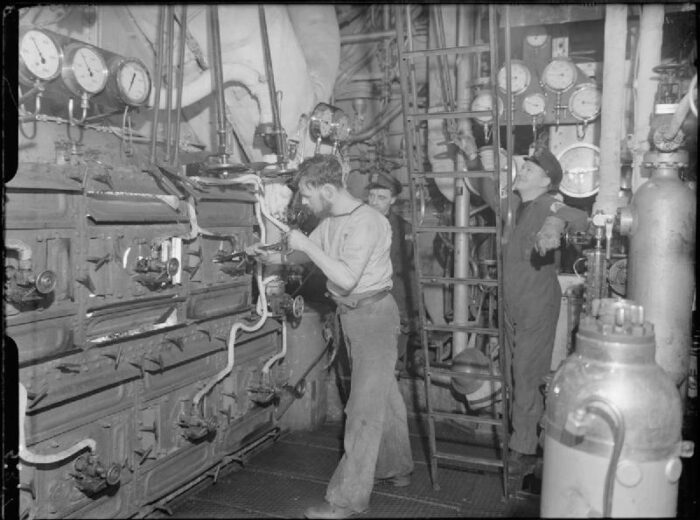
HMS Inglefield Machinery (IWM)
To alleviate this extra displacement, the received two beefier Parsons geared steam turbines fed by three slighlty larger Admiralty three-drum boilers for a total output of 38,000 shaft horsepower (28,000 kW) versus 34,000 shp (25,000 kW) on a standard I class, so this was significant. This enabled her to reach 36 knots (67 km/h; 41 mph) and on trials reached 36.7 knots (68.0 km/h; 42.2 mph) based on 38,081 shp (28,397 kW). She also had extra fuel oil for a range of 5,500 nautical miles (10,200 km; 6,300 mi) at 15 knots (28 km/h; 17 mph), a bit more than the 5,530 nmi than the I class as calculated.
Her crew was of course larger at 175 officers and ratings versus 135, since she had the extra staff for the flotilla captain(D) with proper accomodations.
Also as customary for leaders she carried not four, but five 4.7-inch (120 mm) Mark IX guns in single mounts ‘A’, ‘B’ formars, ‘X’ and ‘Y’ at the stern, ‘C’ on a bandstand between funnels. Anti-aircraft (AA) defence comprised two quadruple 0.5 inch Vickers Mark III machine gun like any I class. She also had the same quintuple torpedo tube mounts amidships, single depth charge rack, two throwers, 16 depth charges in reserve. But as WW2 broke out, she obtained 35 DCs and also had by default an ASDIC sound detection system.
⚙ HMS Inglefield specifications |
|
| Displacement | 1,544 long tons (1,569 t) standard, 2,081 long tons (2,114 t) deep load |
| Dimensions | 330 x 34 x 12 ft 6 in ft (100.6 x 10.4 x 3.8 m) |
| Powerplant | Same, except 38,000 shp (28,000 kW) |
| Top speed | As I class (36 knots) |
| Armament | Same except extra “C” 4.7-inch (120 mm) Mark IX |
| Crew | 175 |
Turkish I class
The Turkish I-class ships were of a similar design to their British counterparts but shipped only eight torpedoes (two banks of four) like the British H class.
In all, four were ordered in 1938 by the Turkish Navy. Names were Muavenet, Gayret, Sultanhisar and Demirhisar.
However with the war breaking up while in construction, all four were placed in potential requisition list. However at this point in late 1941, the allies tried to appease Turkey, a neutral country with a very important strategic lotation. Unlike in August 1914, when British forcible battleships requisitions angered the Turkish Ottomans and pushed them in the arms of the central Empires, negociations to purchase two of the four ships were eventually settled in 1941. Turkey would retain the last two as soon as completed, while the first two would be added to the ten I class already in service. The career of Inconstant (ex-Muavenet) and Ithuriel (ex-Gayret) are details later in the article. The allies never obtained Turkey to take side, not more than the axis.
Muavenet was laid down at Vickers, Barrow on 24 May 1939 she was launched on 24 February 1941, acquired on 14 November and completed on 24 January 1942, Gayret at Vickers, Barrow on 24 May 1939, launched on 15 December 1940, acquired ad commissioned in the RN as 3 March 1942. They had been delayed due to the yard focusing resources on other ships, and until the negociations went to an agreement.
 TGC Sultanhisar (1940)
TGC Sultanhisar (1940)
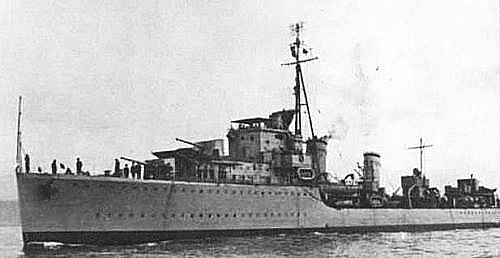
Sultanhisar was laid down at William Denny, Dumbarton on 21 March 1939, launched on 17 December 1940 and commissioned on 28 June 1941. She was delivered to Turkey in 1942.
She served with the Turkish Navy until her decommissioning in 1960. She was the second ship of the Turkish Navy with that name, following the Ottoman torpedo boat Sultanhisar.
 TGC Demirhisar (1941)
TGC Demirhisar (1941)
demirhisar was laid down in 1939 at William Denny, Dumbarton, launched on 28 January 1941 then delivered to Turkey in 1942. She also served until 1960. For details on her career, see the Turkish Navy in the cold war.
I class Destroyers career
 HMS Inglefield (D02)
HMS Inglefield (D02)
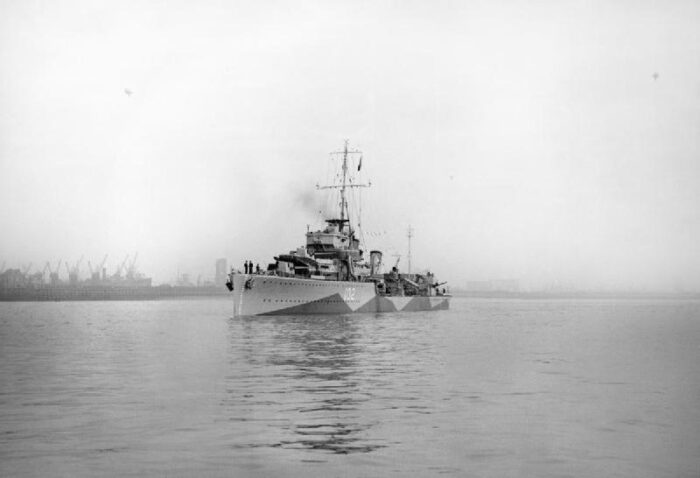
HMS Inglefied on 9 November 1942, Mediterranean campaign (IWM).
Inglefield was Ordered on 14 November 1935 to Cammell Laird, Birkenhead, laid down on 29 April 1936, launched on 15 October 1936 and commissioned on 25 June 1937. In September 1939, HMS Inglefield was deployed as leader of the 3rd Destroyer Flotilla (Mediterranean Fleet), based at Malta. She was transferred nevertheless to the Home Fleet at the end of September 1939, patrolling the Western Approaches. She escorted HMS Courageous but had to divert to answer a distress signal from SS Kafirstan and was not there to protect Courageous whe she was sunk. She rushed to the area and searched in vain fort U-29, which escaped.
Norwegian Campaign
One month later, Inglefield with her sisters HMS Ivanhoe and Intrepid, she sank U-boat U-45 off the southwest coast of Ireland. Seh later dodged torpedoes of U-18.
A few days later she assisted, towed HMS Triad back to Stavanger (damaged in the North Sea). The she sank alone the coastl Type IIC U-63, in early 1940 while assisting HMS Imogen and HMS Narwhal when surfaced. 24 germans were rescued.
In May 1940 she was called to participate in the evacuation of British troops from Åndalsnes. In June, she escorted the damaged HMS Antelope and HMS Electra after their mutual collision while escorting HMS Ark Royal off Trondheim, slowly and through a violent storm.
Next she was sent to the North Sea with HMS Zulu, to escort HMS Renown and Repulse to try and sink KMS Scharnhorst, believed to be instead Deutschland.
But her most famous role in May 1941 was in escort of King George V and Rodney in the final phase of the hunt for the German battleship Bismarck. In August 1941, she was in Scapa Flow for a visit by King George VI and the latter boarded her to sail and review the fleet.
Arctic Convoys
She was designated to escort the first northern convoy to Murmansk, alongside with HMS Victorious and HMS Argus. She made several of these escort missions in the Arctic. However by early 1942 she was detached to support commando raids on the coast, bombarding Florø with HMS Intrepid, sinking three axis ships and destroying factories there. In April 1942 she was sent to the Mediterranean to escort USS Wasp to Malta. On 3 July she was detached to search for Tirpitz, reported no longer in her normal anchorage. In 1943, she was transferred back to Atlantic convoy but remained on the home waters leg.
Mediterranean Campaign
Next she was sent to the Mediterranean and By July 1943 she took part in the invasion of Sicily alongside Greek and Polish destroyers, four cruisers, Nelson, Rodney, Warspite and Valiant, Indomitable and Formidable, all gathered in the Ionian Sea. She was part of their active ASW screen while they shelled enemy positions ashore. Her normal based was Malta. She later also supported the landings at Salerno, first as ASW screen, then on shore artillery support. She also escorted HMS Renown carrying PM Winston Churchill on board from Algiers to Alexandria.
She took part in Operation Shingle in early 1944. She supported the landings at Anzio shelling axis reinforcement and supply routes and providing covering fire for the troops heavily engaged after a diversionary bombardment of Civitavecchia, to drive the axis away from Anzio. She notably later pummelled the coastal road at Formia for two days and supported the ground perimeter under assault at Anzio, from Naples, also later ferrying supplies and troops, alternated with covering fire and shelling coastal roads.
On 15 February 1944, she escorted an ammunition ship from Naples to Anzio nefore taking an anchorage in Anzio with her guns bearing to any shore target inland. However at dusk the German Luftwaffe attacked with II./KG 100 Dornier bombers equipped with the new Henschel Hs 293 glider bombs. She took a direct hit which penetrated dep, broke her keel, flooded her and she sank with 35 lives. 157 survivors were rescued and returned home. Jack Rumbold was later mentioned in dispatches as the last officer to abandon ship, coordinating the evacuation and ensuring there was none more to save.
 HMS Icarus (D03)
HMS Icarus (D03)
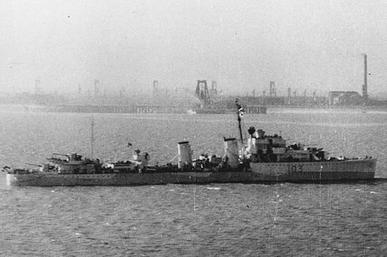 HMS Icarus was laid down at John Brown & Company, Clydebank on 9 March 1936, launched on 26 November 1936 and completed on 3 May 1937. On 29 November 1939, Icarus spotted U-35 between the Shetland Islands and Bergen but her ASDIC was inoperative. Kingston and Kashmir were called and the first managed to DC and forced the U-Boat to surface to finish her off. Icarus took part in the Norwegian campaign. She captured the 8,514 ton supplier Alster (renamed Empire Endurance in British service) on 11 April. She took part in the Second Battle of Narvik on 13 April 1940 and later to Operation Dynamo, evacuation from Dunkirk by late May-early June, unscaved.
HMS Icarus was laid down at John Brown & Company, Clydebank on 9 March 1936, launched on 26 November 1936 and completed on 3 May 1937. On 29 November 1939, Icarus spotted U-35 between the Shetland Islands and Bergen but her ASDIC was inoperative. Kingston and Kashmir were called and the first managed to DC and forced the U-Boat to surface to finish her off. Icarus took part in the Norwegian campaign. She captured the 8,514 ton supplier Alster (renamed Empire Endurance in British service) on 11 April. She took part in the Second Battle of Narvik on 13 April 1940 and later to Operation Dynamo, evacuation from Dunkirk by late May-early June, unscaved.
By May 1941, she was scrambled to Scapa Flow as Bismarck was signalled underway. On 22 May past midnight she was at sea with Achates, Antelope, Anthony, Echo, and Electra escorting Hood and Prince of Wales to the northern approaches. They needed to refuel in Hvalfjord in Iceland, to sail to the Denmark Strait but degraded weather was such that at 20:55 hrs. Admiral Lancelot Holland on Hood signalled the destroyers they could leave goven their slow speed, struggling in high waves. At 02:15, 24 May, they spread out at 15 miles (24 km) intervals search to the north and at 05:35 Hood spotted the Bispmarck and Prinz Eugen, with a fire exchange starting at 05:52. When the loss of Hood was reported, Electra raced to the scene but arrived two hours but only found three survivors while Icarus and Anthony also soon joined in the search found none and left the area.
She was called for the Med, taking part in Operation Pedestal to Malta in August 1942 as well later as the raid on Spitzbergen, and was assigned in many Atlantic and Russian convoys, clamining on 6 March 1944 U-744 with the corvette Kenilworth Castle, St. Catharines, Fennel and Chilliwack, destroyers HMCS Chaudiere and Gatineau. On 21 January 1945 she sank U-1199 with Mignonette in the Channel, off Scilly. Captain Colin Maud was the Juno beach master on D-day and in the movie “The Longest Day” was played by Kenneth More with his bulldog. LtCdr John Simon Kerans, XO also starred in the ‘Yangtse Incident’ movie. HMS Icarus was paid off on 29 August 1946, BU from 29 October 1946 at Troon, Scotland.
 HMS Ilex (D61)
HMS Ilex (D61)
 HMS Ilex was laid down at John Brown & Company, Clydebank on 9 March 1936, launched on 28 January 1937 and completed on 7 July 1937. Salford Sea Cadets were affiliated to her. In 1939 she was in the Mediterranean, 3rd DF, but transferred to the Western Approaches. On 13 October under LtCdr Philip Lionel Saumarez she sank U-42 SW of Ireland with Imogen. She was in Fleet screening missioned in the North Sea but transferred in May 1940 to the 2nd DF, Mediterranean. On 27 June with Dainty, Defender, Decoy and HMAS Voyager she sunk the sub. Console Generale Liuzzi off Crete. On 29 June she probably sank Argonauta and co-claimed with Dainty the Uebi Scebeli, also off Crete. She took part in the Battle of Calabria and on 19 June, escorting HMAS Sydney and assisted sinking the Bartolomeo Colleoni off Cape Spada, rescuing 230 survivors. Next she escorted Illustrious for the raid on Taranto. By 20 March 1941 she screened the fleet at the Battle of Cape Matapan. On 14 June she took dalaged from Stukas near misses, towed to Haifa for repairs, then Suez, Aden, Mombassa and Durban, and ended at Charleston, completed only by 7 September 1942. She remained in Freetown in convoy duties.
HMS Ilex was laid down at John Brown & Company, Clydebank on 9 March 1936, launched on 28 January 1937 and completed on 7 July 1937. Salford Sea Cadets were affiliated to her. In 1939 she was in the Mediterranean, 3rd DF, but transferred to the Western Approaches. On 13 October under LtCdr Philip Lionel Saumarez she sank U-42 SW of Ireland with Imogen. She was in Fleet screening missioned in the North Sea but transferred in May 1940 to the 2nd DF, Mediterranean. On 27 June with Dainty, Defender, Decoy and HMAS Voyager she sunk the sub. Console Generale Liuzzi off Crete. On 29 June she probably sank Argonauta and co-claimed with Dainty the Uebi Scebeli, also off Crete. She took part in the Battle of Calabria and on 19 June, escorting HMAS Sydney and assisted sinking the Bartolomeo Colleoni off Cape Spada, rescuing 230 survivors. Next she escorted Illustrious for the raid on Taranto. By 20 March 1941 she screened the fleet at the Battle of Cape Matapan. On 14 June she took dalaged from Stukas near misses, towed to Haifa for repairs, then Suez, Aden, Mombassa and Durban, and ended at Charleston, completed only by 7 September 1942. She remained in Freetown in convoy duties.
In February 1943 she was back to the Mediterranean, for the summer Sicily and Salerno landings. On 13 July with HMS Echo, she sank the Italian submarine Nereide SW of the Straits of Messina. In December she was worn out and retired for repairs at Bizerte, then Ferryville, laid up there. By March 1945 she was towed to Malta and placed in “reserve category C”, declared “not operational service” in August. She was sold for scrap at Malta on 22 January 1946, BU in Sicily in 1948.
 HMS Imogen (D44)
HMS Imogen (D44)

Imogen was laid down at Hawthorn Leslie & Company, Hebburn on 18 January 1936, launched on 30 October 1936 and completed on 2 June 1937. Imogen was assigned to the 3rd DF, Mediterranean Fleet upon commissioning. She was based in Malta, transferred to Gibraltar, patrolled Spanish waters from 1938. She later had refits in Malta and Sheerness, lasting until August 1939. She was retransferred from the Med to the Western Approaches Command on 4 September, then the Home Fleet in October. She Ilex, she sank U-42 on 13 October after she attacked SS Stonepool.
Whilst escorting merchant ships to Barry in Irerland, she rescued survivors from the French freighters Louisiane and Bretagne. After refit at Liverpool (20 October-7 November) she was back in the Home Fleet, helping the torpedoed HMS Barham off the Butt of Lewis, 28 December. With Inglefield she sank U-63 after, spotted by Rorqual on 25 February 1940. In the Norwegian Campaign, she escorted vessels, notably troopships from Kirkenes and Alta to Sjøvegan. By mid-June, she escorted Illustrious to Bermuda. While off Duncansby Head in the night of 16 July 1940 she collided with HMS Glasgow in thick fog, North Sea, badly damaged, caught fire, sank. Glasgow rescued 10 officers and 125 ratings, 19 went down with her.
 HMS Imperial (D09)
HMS Imperial (D09)
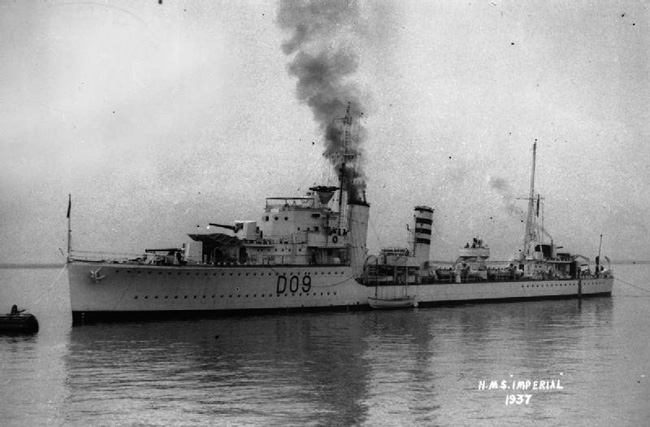
HMS Imperial was laid down at Hawthorn Leslie & Co. in Hebburn on 29 January 1936, launched on 11 December 1936 and completed on 30 June 1937. Her delay resulted in the delivery of her gun mountings after a bottleneck, under a contract price was £257,117 excluding guns and communication equipment. She took part in the Norwegian Campaign. By August 1940 she escorted convoys to Malta. On 28 May 1941, she was attacked by Italian bombers from 41 Gruppo, taking severe damage. A team onboard confirmed she was damaged beyond repair, and she was thus scuttled 55 nautical miles (102 km; 63 mi) east of Kassos.


 HMS Impulsive (D11)
HMS Impulsive (D11)

HMS Impulsive was laid down at J. Samuel White, Cowes on 9 March 1936, launched on 1 March 1937 and commissioned on 29 January 1938. On 28-29 May 1940 she made four trips for the Dunkirk evacuations (Operation Dynamo) saving 2,919 troops. She laid mines, escorted Arctic convoys. On 13 May 1941, she rescued 278 survivors from HMS Salopian. However she was spotted and torpedoed by U-457 in the Barents Sea, north-east of Murmansk, on 16 September 1942 during such escort missions. Hat the helm was William Scott Thomas, grandfather of actress Kristin Scott Thomas and father of Admiral Sir Richard Thomas. She survived, but was towed back to Britain, declared a total constructive loss, sold for scrap to W. H. Arnott, Young on 22 January 1946, BU at Sunderland.
 HMS Intrepid (D10)
HMS Intrepid (D10)
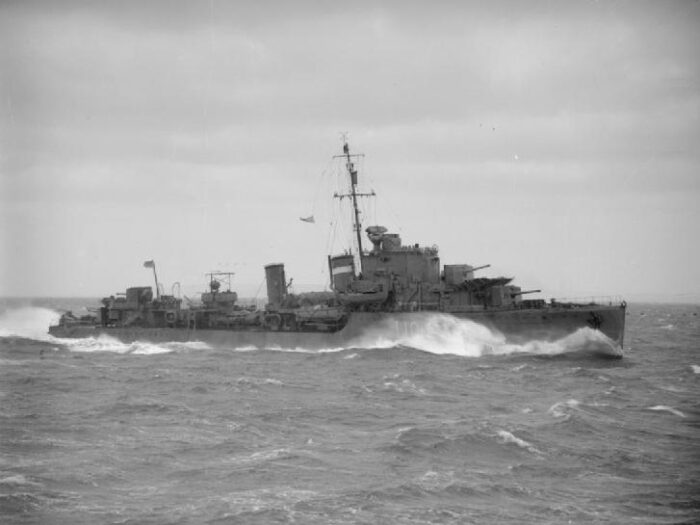
HMS Intrepid was laid down at J. Samuel White, Cowes on 6 January 1936, launched on 17 December 1936 and completed on 29 July 1937. She attacked and sank the U-45 SW of Ireland, 14 October 1939 with Ivanhoe and Inglefield. In naval manoeuvres of 17 March 1940 she collided with the fishing trawler MV Ocean Drift, sinking her, loosing two men, rescuing her crew. Intrepid took part in the Bismarck chase in May 1941. Next, she was transferred to the Mediterranean and took part in Operation Pedestal, escorting of a convoy to Malta in August 1942. While in the Aegean Sea on 26 September 1943 she was attacked by German Junkers Ju 88 aircraft, sinking in Leros harbour.
 HMS Isis (D87)
HMS Isis (D87)
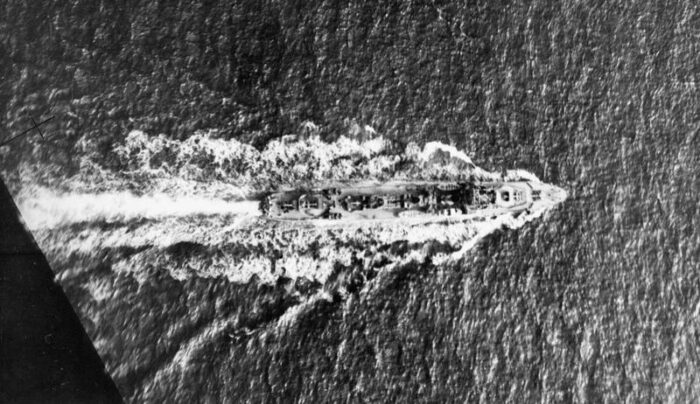
Isis was Laid down at Yarrow on 6 February 1936, launched on 12 November 1936 and commissioned on 2 June 1937. She took part in the evacuation of Greece by April 1941. On 19 February 1943 with HMS Hursley and a Vickers Wellington she attacked and sank U-562 SNE of Benghazi. After the Battle of Crete she took part in the Syria-Lebanon campaig, hit in 1941 off Beirut, Lebanon by Vichy French forces while pursuing two Vichy French destroyers which were escaping. A lone Junkers Ju 88 made a direct hit, and she had to be towed to Haifa in Palestine. The tow rope snapped but the engines were restarted. She successfully reached Haifa. Long after repairs and escort missions she was tasked to D-Day convoy escorts. She struck a mine and sank on 20 July 1944 in channel ‘T’, western sector, Normandy landing beaches, last interwar standard destroyer lost in WW2. She went down quickly, with 11 officers and 143 ratings, so most of her crew.
 HMS Ivanhoe (D16)
HMS Ivanhoe (D16)
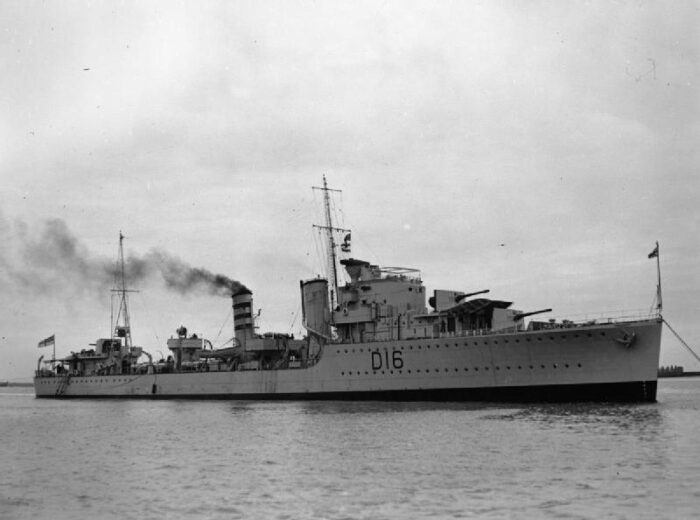
HMD Ivanhoe was assigned to the 3rd DF, Mediterranean Fleet, upon commissioning. She took part in training exercises with the French Navy, from December to January 1938 but was forced to leave these to solve boiler tubes in superheaters issues; They were replaced at Malta between 15 January and 19 March. Next, Ivanhoe was transferred to Gibraltar, patrolled Spanish waters (Non-Intervention Committee) anbd protected British citizens in Cartagena until March 1939.
Her crew learne dof the war between Alexandria and Malta. She was in Plymouth on 14 September, 3rd DF now under Western Approaches Command. Later with Inglefield, Intrepid, Icarus sank U-45 on 14 October. Refitted at Sheerness Dockyard, she was converted to a minelayer from 14 November to 13 December. Transferred to the specialist minelaying 20th DF on 12 December, she laid her first minefield at the mouth of the Ems estuary, night of 17/18 December and another on 2/3 January 1940 with Intrepid, then more anti-submarine minefields but was reconverted as escort at Portland from 27 January to 3 February but reconvrted again and by early April, she escorted the 2nd DF in Operation Wilfred on 8 April and escorted HMS Renown, assisting her brief Action off Lofoten with Scharnhorst and Gneisenau on 9 April. She later carried the 15th Infantry Brigade to Åndalsnes and loaded mines, laid a minefield in the approaches to Trondheim on 29/30 April.
On 15/16 May with Esk and Express, she laid 164 mines off the Hook of Holland, claiming three German minesweepers on 26 July. Three nights later with Intrepid, Impulsive, and minelayer Princess Victoria, they laid a minefield off the Dutch coast and later rescued the crew of Princess Victoria struck (German mine). They laid five more minefields off the Dutch coast. From 29 May she took part in the Dunkirk evacuations (930 troops, then crew of Grafton and later 1,290 men to Dover). On the morning of 1 June loaded with troops, she was attacked by Stukas, with two bombs missing port and starboard, plus one corssing the upper deck, she lost both forward boiler rooms and had 26 killed, many more wounded. Her soldiers were taken off by the minesweeper Speedwell and DD Havant and she reached Dover under her own power for repairs at Sheenress until 28 August, converted back into a minelayer at Immingham until 31 August, transferred to the 20th DF, sailing with Intrepid, Icarus, Esk and Express to mine again the Dutch coast north of Texel. Express hit a mine and was assisted by Ivanhoe, whiuch herself hit a mine. Her engines were operationa again afat hours of work on 1 Septembe so she limped back at 7 knots with a badly damaged bow but that night around 04:00, she lost all speed. At 08:00 her crew was partly evacuated by four MTBs, 37 remaining. Ivanhoe listed until early in the afternoon, until her pumps failed. The captain ordered to abandon ship, scuttled her by opening her valves. Later she was spottd and attacked by a German aircraft and remained afloat, HMS Kelvin came back and torpedoed her later in the afternoon.
 HMS Inconstant (H49)
HMS Inconstant (H49)
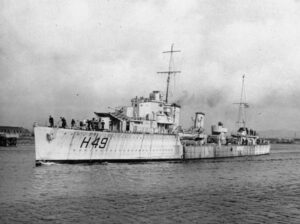 Laid down as Muavenet at Vickers, Barrow on 24 May 1939 she was launched on 24 February 1941, acquired on 14 November and completed on 24 January 1942. She took part in the assault on Madagascar (Operation Ironclad) in May 1942. Later in the Mediterranean during escort and patrols missiones she attacked & sank U-409 in the Mediterranean, north-east of Algiers on 12 July 1943. Later back in home waters, she also claimed on 18 June 1944 U-767 while in company with tHMS Fame and Havelock in the Channel, south-west of Guernsey. She was was returned to Turkey on 9 March 1946, renamed Muavenet, tasking her placed in a class now rediced to three ships after the loss of Ithurial (see below). She was discarded in 1960. No known assignations or servive logs. See the cold war turkish navy for more.
Laid down as Muavenet at Vickers, Barrow on 24 May 1939 she was launched on 24 February 1941, acquired on 14 November and completed on 24 January 1942. She took part in the assault on Madagascar (Operation Ironclad) in May 1942. Later in the Mediterranean during escort and patrols missiones she attacked & sank U-409 in the Mediterranean, north-east of Algiers on 12 July 1943. Later back in home waters, she also claimed on 18 June 1944 U-767 while in company with tHMS Fame and Havelock in the Channel, south-west of Guernsey. She was was returned to Turkey on 9 March 1946, renamed Muavenet, tasking her placed in a class now rediced to three ships after the loss of Ithurial (see below). She was discarded in 1960. No known assignations or servive logs. See the cold war turkish navy for more.
 HMS Ithuriel (H05)
HMS Ithuriel (H05)
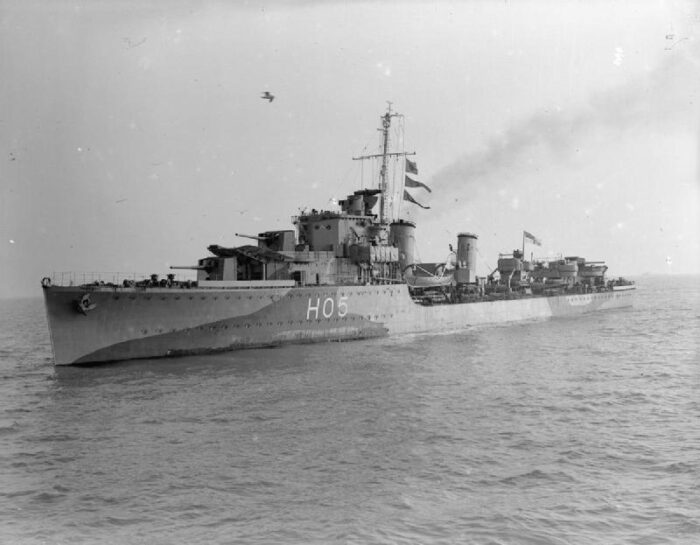
Laid down as Gayret at Vickers, Barrow on 24 May 1939, she was launched on 15 December 1940, acquired ad commissioned in the RN as 3 March 1942. She took part in Operation Harpoon & Operation Pedestal, escorting convoys to Malta in June & August 1942. In Operation Pedestal, she depth charged, rammed and sank the Italian sub. Cobalto.
She was attacked by the Luftwaffe off Bone Algeria, during Operation Torch, on the night of 27–28 November 1942. A direct hiot and several near misses left her damaged beyond repair. On 29 November, she was beached for temporary repairs but progress was slow and still by January 1943, she had been repaired enough to be towed back to a more suitable yard. On 27 February, she was towed to Algiers, the nearest drydock, for survey. In March, she was declared beyond local repair, laid locally but not registered yet as “total constructive loss”.
In August, she was prepared for towing to Gibraltar. On 18 August, she proceeded there and entered the bastion in September, placed in care and maintenance and by October, deployed for accommodation & training duties, never fully repaired. In July 1944 hshe was towed to the United Kingdom. On 1 August she started her passage to Plymouth, in care of the tug Prosperous. On 8 August, she was paid off on arrival at Plymouth, placed on the Disposal List, later sold to Iron & Steel Corp. P & W McLellan. On 11 August she was towed the last time to Bo’ness near Edinburgh, arrived on 13 August and scrapping commenced. This reduced the Turkish class postwar to three ships.
Read More/Src
Books
Cocker, Maurice Destroyers of the Royal Navy, 1893-1981, 1983, Ian Allan
Dickens, Peter (1972). HMS Hesperus. Windsor, UK: Profile Publications.
Conway’s All the World’s Fighting Ships, 1922-1946, Ed. Robert Gardiner, Naval Institute Press
M. J. Whitley Destroyers of World War II, An International Encyclopedia, Arms and Armour Press, 1988
Barnett, Correlli (1991). Engage the Enemy More Closely: The Royal Navy in the Second World War. New York: Norton.
Cain, T. J.; Sellwood, A. V. (1976). H.M.S. ‘Electra’. London: Futura Publications.
Colledge, J. J.; Warlow, Ben (2006) [1969]. Ships of the Royal Navy: The Complete Record of all Fighting Ships of the Royal Navy (Rev. ed.). Chatham Publishing.
English, John (1993). Amazon to Ivanhoe: British Standard Destroyers of the 1930s. Kendal, England: World Ship Society.
Friedman, Norman (2006). British Destroyers & Frigates: The Second World War and After. Annapolis, Maryland: Naval Institute Press.
Lenton, H. T. (1998). British & Empire Warships of the Second World War. Annapolis, Maryland: Naval Institute Press.
Rohwer, Jürgen (2005). Chronology of the War at Sea 1939–1945: The Naval History of World War Two (Third Revised ed.). NIP
Van der Vat, Dan The Atlantic Campaign: World War II’s Great Struggle at Sea (Harper and Row, New York, 1988).
IWM Interview with John Eaden, who commanded HMS Inconstant in 1943
Links
on naval-history.ne :Inglefield.htm
warsailors.com/
uboat.net class I
en.wikipedia.org I-class_destroyer
on navypedia.org/
on miramarshipindex.nz
web.archive.org belgeler.com/
Video
Model Kits
Full query on scalemates.com/ Ex: HMS Ithuriel, Ilex, 1942 by IBG Models 1:700 and H.M.S. ‘Ivanhoe’, Impulsive, MisterCraft 1:500. S-015 Niszczyciel klasy “I” [Destroyer Class I] ZTS Plastyk 1:500.

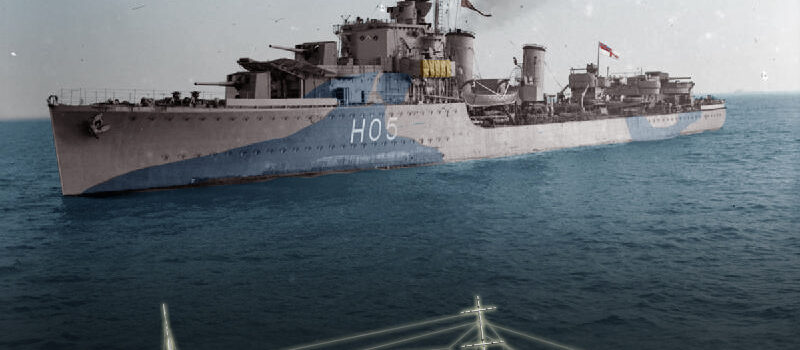
 Latest Facebook Entry -
Latest Facebook Entry -  X(Tweeter) Naval Encyclopedia's deck archive
X(Tweeter) Naval Encyclopedia's deck archive Instagram (@navalencyc)
Instagram (@navalencyc)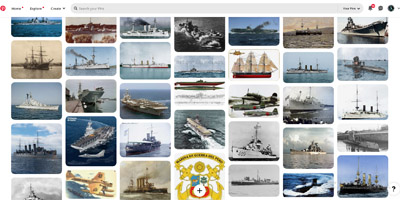

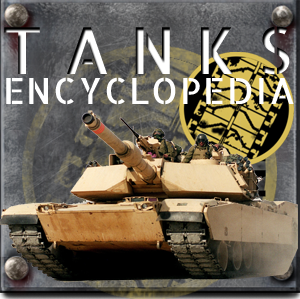
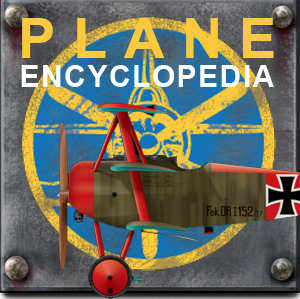
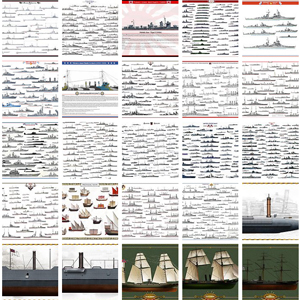
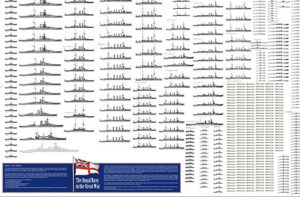
 French Navy
French Navy Royal Navy
Royal Navy Russian Navy
Russian Navy Armada Espanola
Armada Espanola Austrian Navy
Austrian Navy K.u.K. Kriegsmarine
K.u.K. Kriegsmarine Dansk Marine
Dansk Marine Nautiko Hellenon
Nautiko Hellenon Koninklije Marine 1870
Koninklije Marine 1870 Marinha do Brasil
Marinha do Brasil Osmanlı Donanması
Osmanlı Donanması Marina Do Peru
Marina Do Peru Marinha do Portugal
Marinha do Portugal Regia Marina 1870
Regia Marina 1870 Nihhon Kaigun 1870
Nihhon Kaigun 1870 Preußische Marine 1870
Preußische Marine 1870 Russkiy Flot 1870
Russkiy Flot 1870 Svenska marinen
Svenska marinen Søværnet
Søværnet Union Navy
Union Navy Confederate Navy
Confederate Navy Armada de Argentina
Armada de Argentina Imperial Chinese Navy
Imperial Chinese Navy Marinha do Portugal
Marinha do Portugal Mexico
Mexico Kaiserliche Marine
Kaiserliche Marine 1898 US Navy
1898 US Navy Sovietskiy Flot
Sovietskiy Flot Royal Canadian Navy
Royal Canadian Navy Royal Australian Navy
Royal Australian Navy RNZN Fleet
RNZN Fleet Chinese Navy 1937
Chinese Navy 1937 Kriegsmarine
Kriegsmarine Chilean Navy
Chilean Navy Danish Navy
Danish Navy Finnish Navy
Finnish Navy Hellenic Navy
Hellenic Navy Polish Navy
Polish Navy Romanian Navy
Romanian Navy Turkish Navy
Turkish Navy Royal Yugoslav Navy
Royal Yugoslav Navy Royal Thai Navy
Royal Thai Navy Minor Navies
Minor Navies Albania
Albania Austria
Austria Belgium
Belgium Columbia
Columbia Costa Rica
Costa Rica Cuba
Cuba Czechoslovakia
Czechoslovakia Dominican Republic
Dominican Republic Haiti
Haiti Hungary
Hungary Honduras
Honduras Estonia
Estonia Iceland
Iceland Eire
Eire Equador
Equador Iran
Iran Iraq
Iraq Latvia
Latvia Liberia
Liberia Lithuania
Lithuania Mandchukuo
Mandchukuo Morocco
Morocco Nicaragua
Nicaragua Persia
Persia San Salvador
San Salvador Sarawak
Sarawak Uruguay
Uruguay Venezuela
Venezuela Zanzibar
Zanzibar Warsaw Pact Navies
Warsaw Pact Navies Bulgaria
Bulgaria Hungary
Hungary

 Bundesmarine
Bundesmarine Dutch Navy
Dutch Navy Hellenic Navy
Hellenic Navy Marina Militare
Marina Militare Yugoslav Navy
Yugoslav Navy Chinese Navy
Chinese Navy Indian Navy
Indian Navy Indonesian Navy
Indonesian Navy JMSDF
JMSDF North Korean Navy
North Korean Navy Pakistani Navy
Pakistani Navy Philippines Navy
Philippines Navy ROKN
ROKN Rep. of Singapore Navy
Rep. of Singapore Navy Taiwanese Navy
Taiwanese Navy IDF Navy
IDF Navy Saudi Navy
Saudi Navy Royal New Zealand Navy
Royal New Zealand Navy Egyptian Navy
Egyptian Navy South African Navy
South African Navy






























 Ukrainian Navy
Ukrainian Navy dbodesign
dbodesign